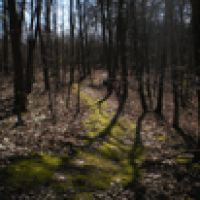Lin et al., 2011
Seasonal GPR Signal Changes in Two Contrasting Soils in the Shale Hills Catchment (Invited)
Lin, H., Zhang, J., Doolittle, J.A. (2011)
AGU Annual Fall Conference Proceedings
Abstract
Repeated GPR surveys in different seasons, combined with real-time soil water monitoring, provide a useful methodology to reveal subsurface hydrologic processes and their underlying mechanisms in different soils and hillslopes. This was demonstrated in the Shale Hills Critical Zone Observatory using two contrasting soils over several dry and wet seasons. Our results showed that 1) the radar reflection in the BC-C horizon interface in the deep Rushtown soil became clearer as soil became wetter, which was linked to lateral flow above this horizon interface that increased the contrast, and 2) the reflection in the soil-bedrock interface and the weathered-unweathered rock interface in the shallow Weikert soil become intermittent as soil became wetter, which was attributed to non-uniform distribution of water in bedrock fractures that created locally strong contrast, leading to point scatter of GPR reflection. This study shows the optimal time for using GPR to detect soil horizon interfaces, the value of nondestructive mapping of soil-rock moisture distribution patterns, and the possibility of identifying preferential flow pathways in the subsurface.
Citation
Lin, H., Zhang, J., Doolittle, J.A. (2011): Seasonal GPR Signal Changes in Two Contrasting Soils in the Shale Hills Catchment (Invited). AGU Annual Fall Conference Proceedings.
 This Paper/Book acknowledges NSF CZO grant support.
This Paper/Book acknowledges NSF CZO grant support.
Explore Further


